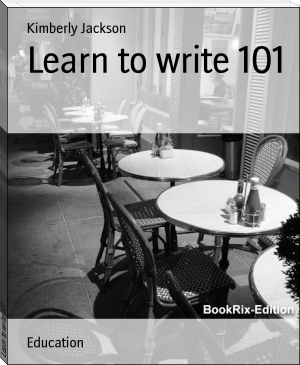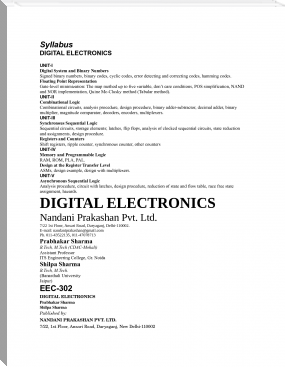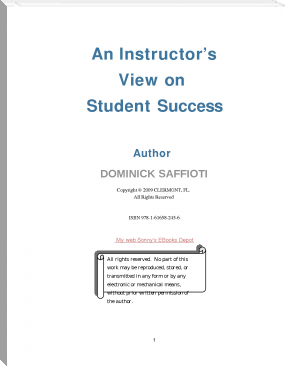Learn to write 101 by Kimberly Jackson (free e novels TXT) 📖

- Author: Kimberly Jackson
Book online «Learn to write 101 by Kimberly Jackson (free e novels TXT) 📖». Author Kimberly Jackson
I first conducted a thorough audit of the company, and I then interviewed the manager to try to determine how much money was missing.
Each sentence above is made up of two sentences glued together with a comma and conjunction. For example, the first sentence is made up of the following:
The Suncom Corporation has just acquired the OILCO company.
It has agreed to sell OILCO’s oil-drilling rights in Texas as soon as possible.
All you need remember is this: when you’re connecting two sentences with a conjunction, you must also include a comma because the conjunction and comma work together as a team. Perhaps this diagram will help you remember:
SENTENCE , conjunction SENTENCE
Often you may use a conjunction but not have a complete sentence on both sides of it. In this case you do not need a comma. For example, you could easily rewrite the above sentences so that one part of each sentence is not a full sentence:
The Suncom Corporation has just acquired the OILCO company and has agreed to sell OILCO’s oil-drilling rights in Texas as soon as possible.
I knew the price of IBM stock would increase after it entered the home computer market but had no idea that the price would skyrocket.
I first conducted a thorough audit of the company and then interviewed the manager to try to determine how much money was missing.
Because in the above examples you do not have full sentences on both sites of the conjunction, there’s no need to include a comma.
One last bit of advice: if your sentence is very short (perhaps 5 to 10 words), you do have the option of omitting the comma if you wish. You have this option because your reader can usually understand a short sentence more readily than a long one, and therefore you would not need a comma for readability. Here is an example:
Mr. Santana is old and he is wise.
This sentence is so short that you may omit the comma. Remember, punctuation is meant to help the writer and the reader, not to make their jobs more difficult. That’s why you may opt to omit the comma between these two short sentences.
3) To Attach Words to the Front or Back of Your Sentence
Most of the sentences we compose really consist of a short core sentence with many details added to that core sentence. Frequently, we add information to sentences by attaching one or more words to the front or back of the core sentence. You don’t need to memorize seven or eight rules naming each of the different structures you can add to your sentence. Instead, remember that when you add information to the front or back of a sentence, you will want to alert your want readers in order to help them clearly understand your message. Here are four examples:
Certainly, Joan is a successful salesperson.
Although she flunked chemistry and barely passed math, Joan is a good student.
In order to help save the company from bankruptcy, we sold shares in the company at discount prices.
Joan is a good student, although she flunked chemistry and barely passed math.
If you examine the sentences above, you will see where the writer has attached words to the front or back of each core sentence. Even when you add one word, such as certainlyin the first example, you want your reader to know where the real sentence begins. This is why you place the comma there. If you read the sentences carefully, you’ll also notice a natural pause where the comma is situated.
4) On Both Sides of a Nonessential Component
The three uses of the comma just discussed are quite easy. You should be able to tell when those commas are needed or not. When you are proofreading your own prose, it will be clear to you whether you have a list of items or not, whether you’re attaching two sentences with a conjunction or not, and whether you are tacking words onto the front or back of your sentence or not. The fourth use of the comma, however, is a little more complex because you must make a judgment call. Nevertheless, even this fourth way to use a comma is relatively simple.
Often, you will insert a group of words into the middle of a sentence. Sometimes this group of words will need to be set off by commas from the rest of the sentence, and sometimes you will not need commas. In order to tell whether you need commas, you must make a judgment about whether the added words are essential to the meaning of the sentence or whether they simply provide extra detail. Let’s use an analogy to illustrate this concept. The modern stereo system is what we call a component system in that it is made up of many different components: an amplifier, receiver, CD player, tape deck, and various speakers. With most stereo systems, you have the option of removing certain components and adding new ones. For example, you may decide to unplug your tape deck but retain the CD player. The various components are optional or nonessential to the system itself. Similarly, you often add or delete components from your sentences. If a component (a group of words in this case) is added to a sentence but does not affect the meaning of the sentence when it is removed, then that component is not essential.
In order to tell a reader that a group of words is a nonessential component, you place commas in front and in back of the group of words. However, if omitting the group of words would drastically change the meaning of the sentence, then those words are not a component; rather, they are essential to the meaning of the sentence. In that case, you would not want to put commas on either side of the component so that the reader knows that those words are absolutely important to the meaning of the sentence. For example, look carefully at the following sentences:
Ms. Johnson, who is the company president, will present the award at our annual dinner.
Banks which hold over a billion dollars in assets are rare.
In the first sentence, the information about Johnson being the company president has no bearing on the main idea of the sentence: that she will present the awards at the annual dinner. Since this information is added or extra, we let the reader know it is an interchangeable component (like the stereo’s tape deck) by placing commas on either side of it. In contrast, the second sentence contains information that is absolutely essential to the meaning of the sentence: “which hold over a billion dollars in assets.” If you were to place commas around these words, you would be erroneously telling the reader that the words constitute a nonessential component. For example, look at this sentence:
Banks, which hold over a billion dollars in assets, are rare.
This sentence tells the reader that the main idea is that “banks are rare.” Certainly, banks are far from rare, but by enclosing the information in commas you have said that they are.
Although we’ve spent some time discussing this use of the comma, it isn’t very difficult to master. Simply remember that when you are proofreading you should check your sentences for essential and nonessential components.
Last month I showed how to unstuff a sentence by removing unnecessary words. This month I’ll offer a quick-and-dirty guide to punctuating a sentence. Nothing that follows is meant to substitute for the nuanced explanations of what’s usually called a writing handbook, the sort of book that college students purchase in a first-semester writing course. These five rules though have the virtue of being manageable, which is difficult to say of a 1,000-page book. In each paragraph that follows, the sentences illustrate the punctuation rule involved. Note that I’m avoiding almost all grammatical terminology. Instead, I’m emphasizing a small number of sentence patterns.
Rule one
If your sentence begins with an introductory element, put a comma after it. Even if it’s a short element, put a comma after it. In time, you’ll be putting this comma in without having to think about it.
Rule two
Any element which interrupts the movement of the sentence, whether it’s big or small, should be set off with commas. This sentence, like the first, also has an element set off with commas. An element that appears at the end of the sentence should also be set off with a comma, as I’m showing here.
Rule three
Items in a series should be separated with commas. What do I mean by “items in a series”? Wine, women, and song. Life, love, and laughter. Crosby, Stills, Nash, and Young.
Rule four
Complete sentences that are joined by a coordinating conjunction (and, but, for, nor, or, so, yet) need a comma before the coordinating conjunction. That might seem obvious, but this comma frequently gets left out. Putting it in makes a sentence more readable, and any reader appreciates that.
Rule five
Complete sentences that are joined without a coordinating conjunction need a semi-colon instead of a comma; the semi-colon shows the end of one sentence and the beginning of the next. Semi-colons are often followed by a connecting word or phrase; however, a connecting word or phrase is not necessary. Sentences joined with only a comma are called comma splices; they’re among the most common errors that come up in college writing.
(Note: In the next-to-last sentence in the previous paragraph, there’s a comma after however because it’s an introductory element in the second sentence.)
Fixing comma splices requires familiarity with two recurring sentence patterns. The first involves a complete sentence, a semi-colon, and another complete sentence:
[complete sentence]; [complete sentence].
Some examples:
Your argument is persuasive; it addresses every objection I had.
His research paper is plagiarized; he is going to fail the class.
The novel is a relatively recent literary form; it’s not nearly as old as epic poetry and lyric poetry.
The second pattern to look for involves a complete sentence, a semi-colon, a connecting word or phrase, a comma, and another complete sentence:
[complete sentence]; [word or phrase], [complete sentence].
(Again, the comma after the connecting word or phrase is appropriate as that word or phrase is an introductory element in the second sentence.)
Some examples:
I decided not to take the job; instead, I’m going to graduate school.
The proposal is flawed; as a result, we’re sending it back for revision.
She did well in the class; in fact, she did much better than she had expected.
How can you tell whether you have two complete sentences or one sentence with an interrupting element at its end? With an interrupting element (something less than a sentence in itself), the parts of the sentence can be switched and still make sense:
I’ll go to work, even though I’m sick.
Even though I’m sick, I’ll go to work.
But with a second complete sentence and a word or phrase such as instead, as a result, or in fact, the parts cannot be switched and still make sense.
Those are the basics of punctuating sentences with commas and semi-colons. I know from working with many students that any writer can get better when it comes to punctuation. The key is the ability to recognize a handful of familiar patterns. Look for the patterns in your sentences, and you too can get better. With some practice, you’ll be able to see the parts of your sentences falling into place, and punctuating correctly will become, believe it or not, a habit, one that you’ll be happy to have acquired.
Colons, by the way, function as arrows or pointers: see
 The desire to acquire knowledge about the surrounding world and human society is quite natural and understandable for a person. Life is so developed that an uneducated person will never occupy a high position in any field. Humanity in its mass, and each person individually, develops objectively, regardless of certain life circumstances and obstacles, but with different intensity. The speed of development depends on the quality of training.
The desire to acquire knowledge about the surrounding world and human society is quite natural and understandable for a person. Life is so developed that an uneducated person will never occupy a high position in any field. Humanity in its mass, and each person individually, develops objectively, regardless of certain life circumstances and obstacles, but with different intensity. The speed of development depends on the quality of training.




Comments (0)